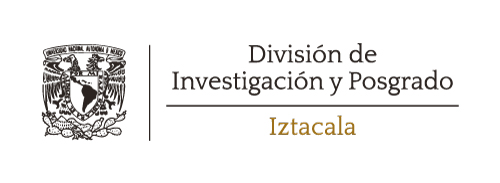
| Location within campus: | Laboratory 10, Biomedicine Unit |
| Phone: | 56231333 Ext. 39817 |
| Head of Laboratory: | Dr. Yolanda Irasema Chirino López Full Professor B tenured chirino@unam.mx |
| Technicians affiliated to the laboratory: | Dr. Norma Laura Delgado Buenrostro nlbuenrostro@gmail.com |
| Research lines per researcher: | Mechanisms of toxicity associated with inhalation and oral exposure to nanoparticles. |

To investigate the mechanisms of toxicity associated with exposure to manufactured nanomaterials. These materials are synthesized at the nanoscale (1 to 100 nm) for applications in electronics, aerospace, architecture, biomedicine, food, among many others.
However, on one hand, inhalation of these nanomaterials can be toxic to the lungs for workers involved in their synthesis, and on the other hand, ingestion of these nanomaterials in food can have adverse effects on the gastrointestinal tract, immune system, and hematological system.
To achieve this objective, we use in vivo and in vitro cellular models, which are exposed to nanomaterials at concentrations relevant to humans.

Bischoff NS, de Kok TM, Sijm DTHM, van Breda SG, Briedé JJ, Castenmiller JJM, Opperhuizen A, Chirino YI, Dirven H, Gott D, Houdeau E, Oomen AG, Poulsen M, Rogler G, van Loveren H. Possible Adverse Effects of Food Additive E171 (Titanium Dioxide) Related to Particle Specific Human Toxicity, Including the Immune System. Int. J. Mol. Sci. 2020 Dec 28;22(1):E207. doi: 10.3390/ijms22010207. Factor de impacto: 4.556
Santibáñez-Andrade M, Sánchez-Pérez Y, Chirino YI, Morales-Bárcenas R, García-Cuellar CM. Long non-coding RNA NORAD upregulation induced by airborne particulate matter (PM10) exposure leads to aneuploidy in A549 lung cells. Chemosphere. 2020 Nov 19:128994. doi: 10.1016/j.chemosphere.2020.128994. Factor de impacto: 5.778
Medina-Reyes EI, Rodríguez-Ibarra C, Déciga-Alcaraz A, Díaz-Urbina D, Chirino YI, Pedraza-Chaverri J. Food additives containing nanoparticles induce gastrotoxicity, hepatotoxicity and alterations in animal behavior: The unknown role of oxidative stress. Food Chem. Toxicol. 2020 Oct 15;146:111814. Factor de impacto 4.679
Medina-Reyes EI, Delgado-Buenrostro NL, Díaz-Urbina D, Rodríguez-Ibarra C, Déciga-Alcaraz A, González MI, Reyes JL, Villamar-Duque TE, Flores-Sánchez ML, Hernández-Pando R, Mancilla-Díaz JM, Chirino YI, Pedraza-Chaverri J. Food-grade titanium dioxide (E171) induces anxiety, adenomas in colon and goblet cells hyperplasia in a regular diet model and microvesicular steatosis in a high fat diet model. Food Chem. Toxicol. 2020 Oct 8;146:111786. Factor de impacto 4.679
Déciga-Alcaraz A, Medina-Reyes, EI, Delgado-Buenrostro NL, Rodríguez-Ibarra C, Ganem-Rondero A, Vázquez-Zapién GJ, Mata-Miranda MM, Limón-Pacheco JH, García-Cuéllar CM, Sánchez-Pérez Y, Chirino YI. Toxicity of engineered nanomaterials with different physicochemical properties and the role of protein corona on cellular uptake and intrinsic ROS production. Toxicology. 2020;442:152545. doi: 10.1016/j.tox.2020.152545. Factor de impacto: 4.099

| Entry profile of potential thesis students: | Students interested in the area |
| Service Social Data: | Assessment of adverse effects associated with exposure to manufactured nanomaterials. Key: 2021-12/63-4856 Activities to be carried out: Maintenance of cell cultures, care and maintenance of experimental animals, tissue processing for immunohistological analysis, preparation of reports based on the analyses conducted. Availability of a minimum of 3 hours per day. |
